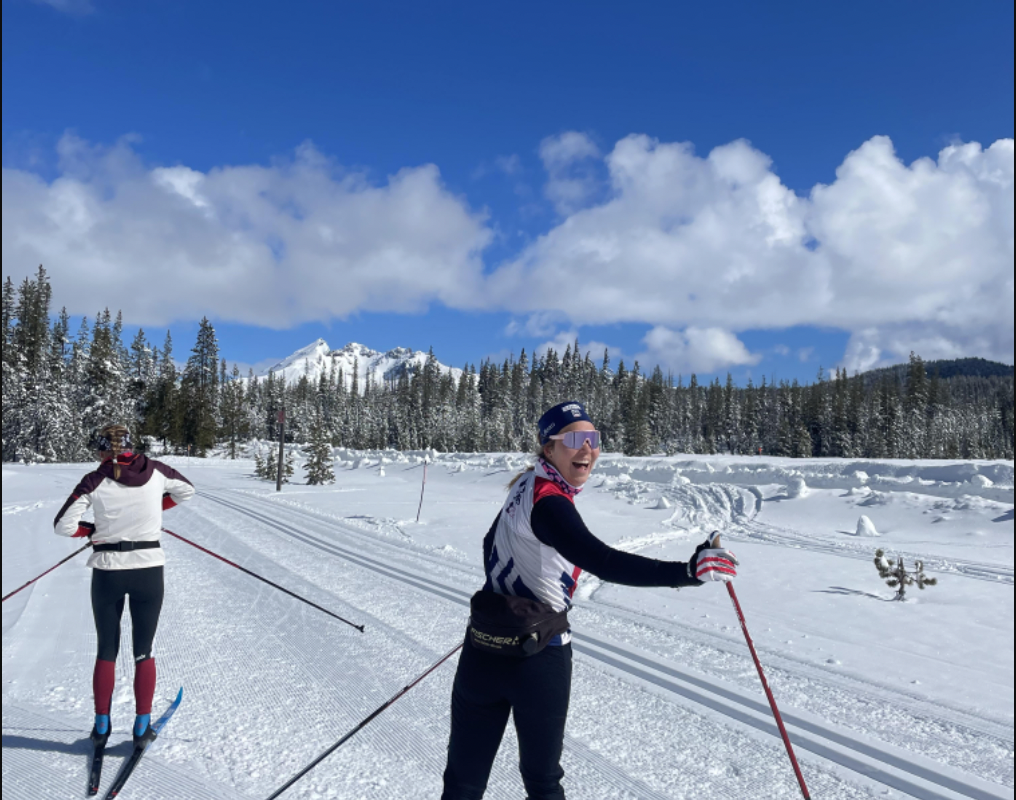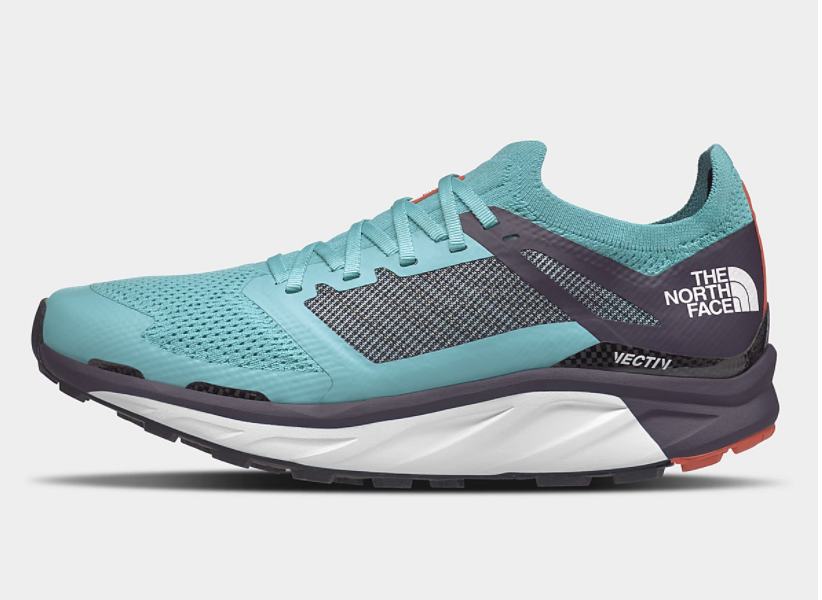Nathan VaporHowe Review by: Casey Collins
As cross-country skiers we’ve all defaulted to running with a standard drink belt. The sort we’ve skied with for years: a foam insulated vessel covered in nylon with a small zipper pocket up top – just enough room for a bar and phone. Suitable for skiing, not exactly the smooth water carrying companion you’d want on a trail run with the undue bouncing. The standard go-to for longer trail runs is the vest. Great for stashing a windbreaker, water, and plenty of fuel. For shorter trail runs, that can be overkill. Many companies sell running belts for those shorter trail runs when minimalism reigns. Think only a small water-filled soft flask, a bar/gel, phone, and car keys.
Nathan Sports sells a men’s version of the “waistpak”, the VaporKrar. I tested the women’s model, the VaporHowe. The basic premise of a “waistpak” is simple: a lightweight belt worn around the waist fabricated from stretchy fabric, and it boasts several pockets for essentials. They feature a step-through design, meaning there’s no adjustable buckle to secure the belt around your waist. They are designed to fit rather snug. If fit properly, there’s no sag or bounce when running.
The VaoprHowe comes with a 600 ml (20 oz.) soft flask that fits in a rear pocket. There’s a front zipper pocket large enough for a standard smartphone, and two side pockets for stashing fuel.

This belt has served me well for short-medium distance trail runs in the 5-10 mile range. I’ve used both the Nathan bottle and my own more rigid water bottles and the Nathan bottle definitely chafes less. From my experience, the “waistpak” has little if any chaffing compared to running with a traditional cross-country ski drink belt.
The main reason I continue to use the belt is the large stretchy pocket for my phone so I can have headphones in while running and the ease with which it carries the basics. I’ve also worn it on shorter runs without the soft flask, just to carry the phone — and it hardly feels like I’m wearing a belt.
There’s one last feature that’s an upside if you run with collapsible/lightweight running poles. The “waistpak” comes with elastic straps to secure collapsed poles. It’s a nice way to carry poles when not in use. Which brings this to mind, if you are carrying water and poles, you can cinch down the load with two small compression straps.

The main limitations of this belt are size and versatility. As someone who tries to use the same gear for as many sports as possible, versatility plays a role in how I choose that gear. I wouldn’t use this for any other activity except trail running. I also feel like I have the right size belt/pack for my body right now but even just a little weight gained (or more with pregnancy or injury) and I don’t think I could squeeze into it. Different body types with more muscle in the legs/thighs (like I was when training harder) and narrow waists might not be able to pull this up and over the thighs. It also can carry a substantial volume of snacks but not much more water than the allotted 600 ml flask. That’s probably by design but for a longer trail run, this wouldn’t be enough for me. Bring on the vest. But there’s a downside to the vest when it’s too much capacity for a shorter run, they can trap heat against your back. That’s not the case with the “waistpak”.
Nathan offers a sizing chart online. The “waistepak” comes in an XXS/XS, S/M, and L/XL. My waist measurement falls in the S/M range, and the fit worked for me. You can find a range of prices in the ballpark of $45.00 to $60.00.
Casey Collins is a Bend, Ore. based speech pathologist, mom, and outdoor adventurer. And best-ever neighbor.






